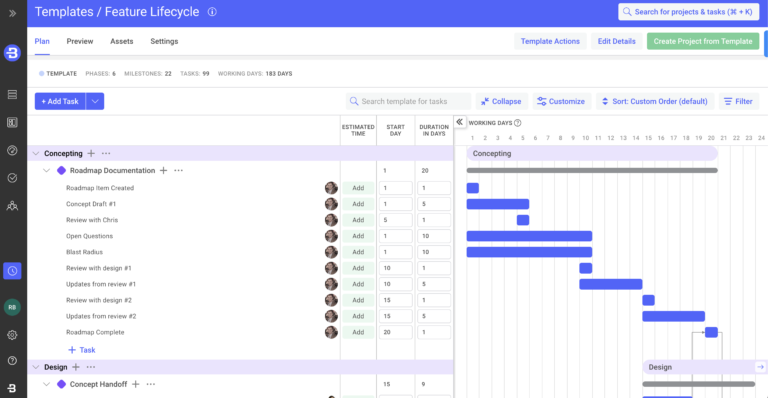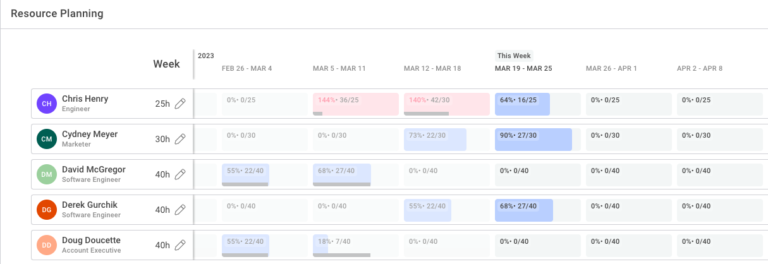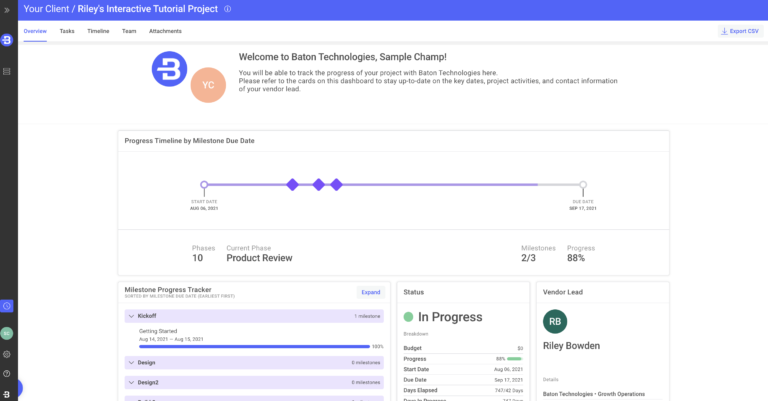Efficiency is paramount to business success in any industry. In SaaS, one area where efficient and innovative processes can make a substantial difference is client onboarding. Traditionally, this phase of the customer journey is time-consuming, error-prone, and often involves repetitive tasks and duplicative data entry – almost all of which can and should be automated using modern technology.
Purpose-built project management solutions are now revolutionizing client onboarding, allowing businesses to streamline and standardize workflows, reduce errors, and provide a more seamless and positive experience for clients. In this blog post, we’ll explore four ways in which purpose-built technology can be harnessed to automate the client onboarding process and elevate client relationships.
Why Is Project Automation Pivotal in Improving Client Onboarding?
Project automation is pivotal in enhancing the client onboarding experience in software for several compelling reasons. Firstly, automation eliminates manual, time-consuming tasks, allowing teams to focus on more strategic and value-added activities. When it comes to software deployment and integration, automation can handle repetitive processes like provisioning user accounts, configuring software settings, and deploying updates swiftly and with precision. This not only accelerates the onboarding process but also reduces the chances of human errors, ensuring a seamless experience for clients.
Secondly, automation enhances consistency and compliance. By automating standardized procedures, software can enforce compliance with best practices and regulatory requirements consistently. This not only mitigates risks associated with non-compliance but also instills trust in clients, who rely on the software to adhere to industry standards and security protocols.
Lastly, automation brings agility to client onboarding. In a dynamic software environment, the ability to adapt quickly to changing requirements and scale operations is crucial. Automation allows for rapid scaling and adjustments, enabling software providers to cater to diverse client needs efficiently. Ultimately, by integrating project automation into client onboarding processes, software companies can optimize efficiency, reliability, and adaptability, offering clients a smoother and more satisfying experience from day one.
4 Ways Purpose-Built Technology Can Be Used to Improve Client Onboarding
Embracing purpose-built project management software to automate the client onboarding process is not just a choice; it’s a strategic imperative. In an era where time-to-value and customer satisfaction are paramount, automation becomes the linchpin for success. Purpose-built technology is tailored to meet the unique needs of software businesses, making it an indispensable tool in your arsenal.
1. Workflow Automation & Task Assignment
The client onboarding process often involves multiple steps and tasks that need to be completed in a specific sequence. Coordinating these tasks and ensuring that they are carried out promptly can be challenging. Leveraging purpose-built technology to standardize workflows and enhance task assignments and stakeholder accountability is a game-changing strategy. Purpose-built technology is tailored to the specific needs and intricacies of software deployment, making it the ideal solution for optimizing this critical process.
Workflow automation tools allow you to define and templatize the steps of your client onboarding process and the actions that need to be taken at each stage, ensuring that every step of the process follows a consistent, well-defined path. This consistency minimizes errors and discrepancies, resulting in a more streamlined and efficient operation. When each task and process is clearly defined and automated, it becomes easier to identify bottlenecks, improve efficiency, and maintain a high level of quality control.

Secondly, purpose-built technology facilitates precise task assignments. It allows for the automatic allocation of responsibilities based on predefined rules and criteria. This not only saves time but also ensures that the right team members, with the necessary skills and expertise, are handling specific tasks. This targeted approach enhances task execution and reduces the risk of tasks falling through the cracks.
Furthermore, these tools enhance stakeholder accountability by providing real-time visibility and transparency into project status with automated alerts and notifications. Stakeholders can easily track the status of tasks, milestones, and overall project progress. This transparency fosters a sense of ownership and responsibility among team members and stakeholders, as everyone is aware of their roles and expectations.

2. Improved Resource Management & Allocation
Managing your client onboarding projects within a centralized platform is a strategic move that can yield significant benefits, particularly in resource management, allocation, and scalability. Unlike disparate systems and spreadsheets, a centralized platform provides a holistic view of all ongoing onboarding projects, enabling software leaders to make informed decisions about resource allocation.
Purpose-built solutions like Baton offer real-time visibility into the status of each client onboarding project. This visibility empowers leaders to assess the workload of their teams, identify bottlenecks, and allocate resources efficiently. By having a clear understanding of project progress and resource availability, teams can avoid overburdening or underutilizing their members, leading to improved productivity and reduced burnout.

Centralized platforms are instrumental in optimizing resource management and allocation while enabling scalability during the client onboarding process. By consolidating project management within a single platform, software leaders can adapt to evolving demands, allocate resources judiciously, and deliver a superior onboarding experience to clients, ultimately driving business growth and success.
3. Collaborative Client Portals
As software leaders, it’s crucial to provide external clients with a centralized portal that offers transparency into project status and allows them to complete tasks seamlessly. A client portal is a centralized place your customers go to get real-time information as it relates to the status of a project. It creates a seamless experience for both the vendor and the client. Portals replace static project plans and updates via email with a living and breathing project plan, real-time visibility, and automated communication.
Effective communication is the cornerstone of project success. Centralized portals offer a direct channel for clients to interact with your team, ask questions, and receive updates. This reduces the likelihood of misunderstandings and ensures that clients are always informed and engaged in the process.
Empowering clients to complete tasks within the portal streamlines the onboarding process. Whether it’s uploading documents, providing feedback, or approving deliverables, clients can take action promptly, reducing project delays and expediting time-to-value.

4. Seamless Integration with CRM
To truly optimize your client onboarding process, it’s crucial to integrate purpose-built technology with your existing systems, particularly CRM and document management systems. Integration ensures that data flows seamlessly between different platforms, eliminating the need for manual data entry and reducing the risk of errors.
When a new client is onboarded, their information should automatically populate your CRM system. This allows your sales and support teams to have immediate access to client details and history facilitating personalized interactions, and enhancing the overall client experience.
Improving handoffs and visibility across the entire organization is paramount when it comes to improving client onboarding and implementation process. A strong integration between your CRM and client onboarding software creates seamless handoffs between teams. This is why Baton has invested so heavily in creating a strong integrations with tools like Salesforce, Hubspot, and many more.

Is a Purpose-Built Client Onboarding Solution Right for Your Team?
Client onboarding is a critical process for businesses that can greatly impact client satisfaction and retention. By harnessing purpose-built technology, you can automate workflows, reduce manual tasks, minimize errors, and provide a more efficient client experience.




